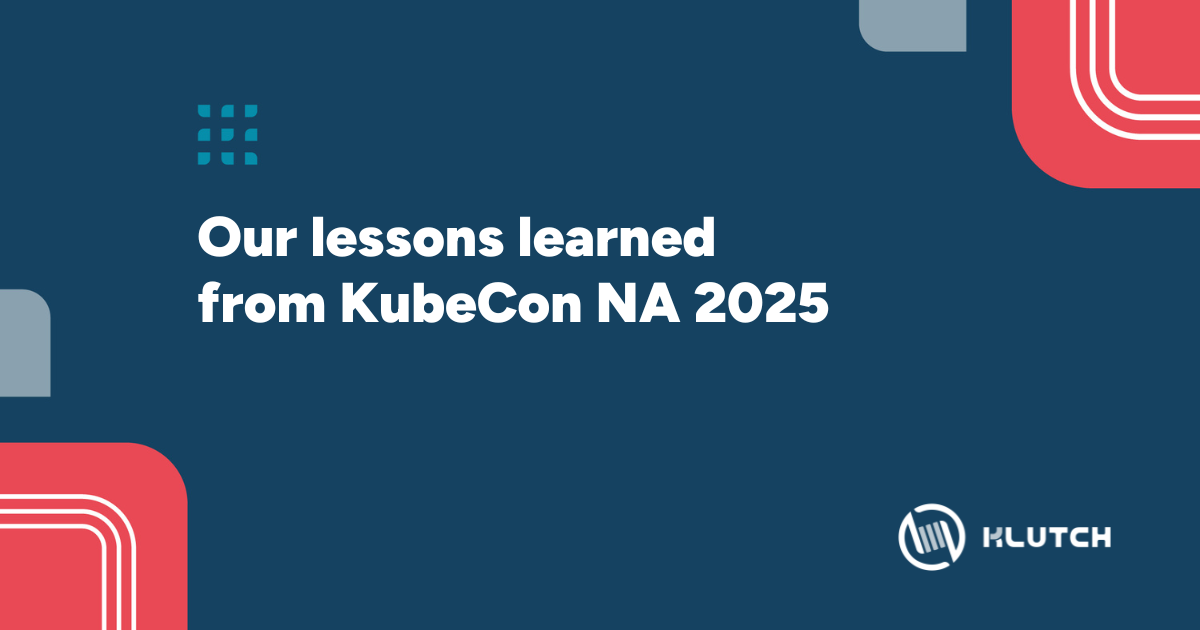Key Takeaways from KubeCon NA 2025

Another KubeCon has wrapped up (this time in Atlanta) and it offered a clear snapshot of where the cloud-native ecosystem is heading. Here are a few trends and lessons we're bringing home, based on conversations at our booth and what our team observed throughout the week.
AI is (still) everywhere
Large AI models and LLM-driven tooling continued to dominate the expo floor. From NVIDIA-powered hardware to a dedicated AI track, it’s clear that AI remains a top-of-mind topic for vendors and practitioners. It wasn’t surprising to see so many adjacent tools and infrastructure products positioning themselves as “AI-ready” or “AI-optimized”.
Platform engineering remains a core theme
Platform engineering was more present, it was prominent! Spotify hosted a full booth for Backstage, reinforcing how critical standardized internal platforms have become. Many of the engineers who stopped by our booth were already well-versed in Crossplane, and we saw several newcomers and competitors using it in similar ways to automate infrastructure provisioning, orchestration, and lifecycle management.
Observability vendors were also out in force, reminding us just how central good visibility is to platform reliability, especially as systems grow more distributed.
What’s fading (at least a bit)
Some topics that once dominated KubeCon felt less amplified this year. Networking, service meshes, and serverless Kubernetes all remain important, but the spotlight has shifted somewhat. Their presence was steady, but not as headline-grabbing as in the past. They seemed overshadowed by AI, platform engineering, and data-related tooling this time around.
What people wanted to know about Klutch
One of the biggest differences from past years was how familiar attendees already were with the problem space Klutch addresses. Visitors were more open to diving into:
-
How Klutch compares to tools like Crossplane
-
How teams can migrate databases and data services into Kubernetes-native environments
-
What day-2 operations look like
-
How a control-plane approach can unify operations across VMs and Kubernetes
Several vendors also expressed interest in partnering, either as automation backends or through deeper integration. These conversations validated that the need for reliable database automation and lifecycle management is growing, especially in mixed VM/Kubernetes environments.
A common point of confusion (and a lesson for us!)
One recurring theme at our booth was that people initially assumed Klutch was “just another operator for a specific database”.
Given that attendees often skim booth visuals for only a few seconds, this misunderstanding was understandable, and a helpful reminder to us. As we evolve our messaging, we’ll focus more on clearly communicating that Klutch is not a single-database operator, but a general-purpose control plane for managing data services across heterogeneous environments.
All-in-all
This year’s KubeCon NA felt like a moment where the Kubernetes community is shifting from “Can we automate this?” to “How do we operate this reliably at scale across clusters, clouds, and infrastructures?”
The conversations we had confirmed that Klutch is solving a real, growing challenge. And we’re excited to continue sharing what we’re building as the ecosystem evolves!